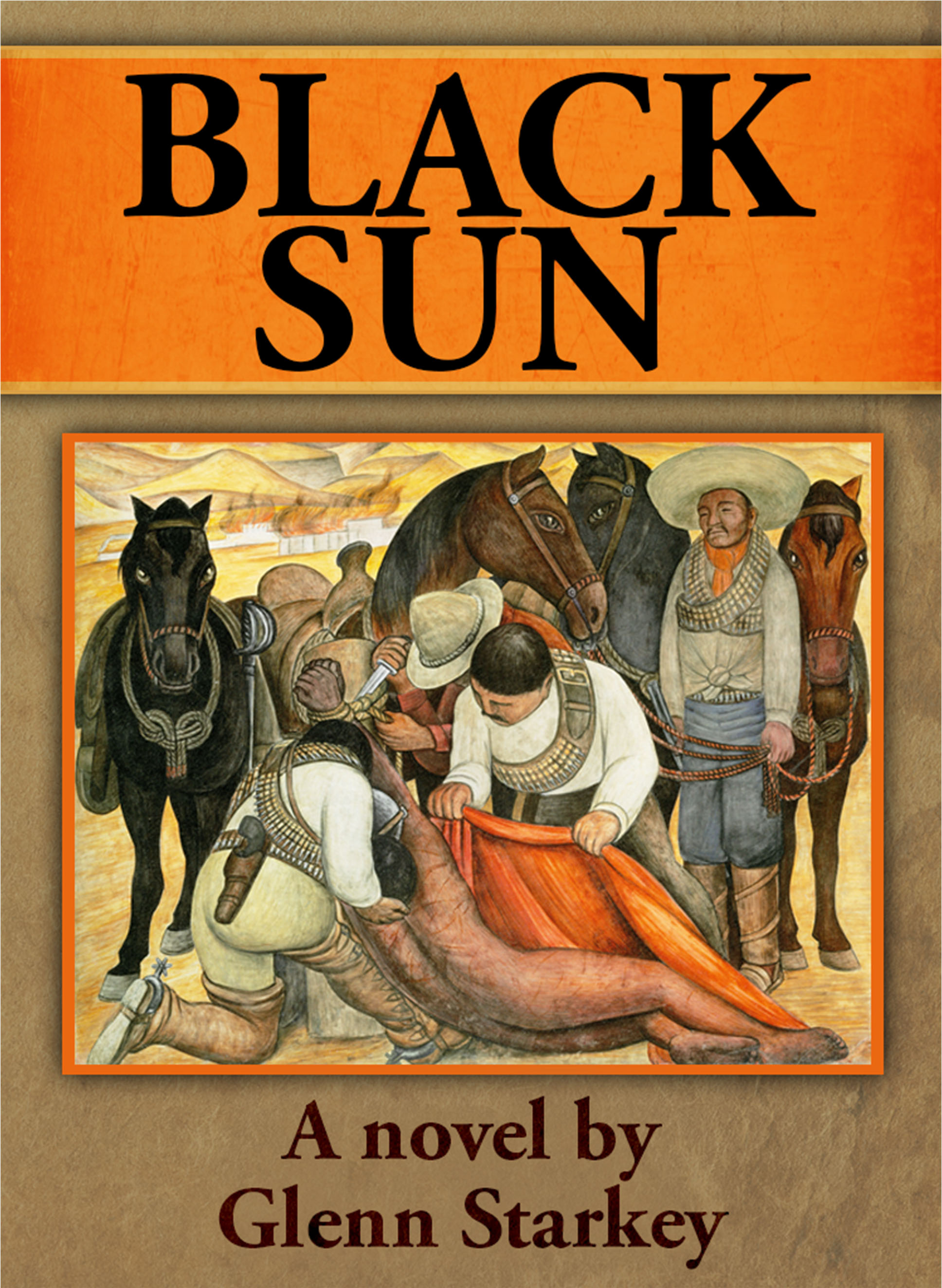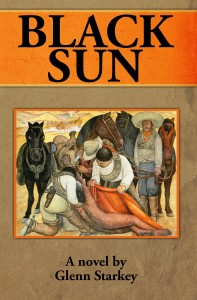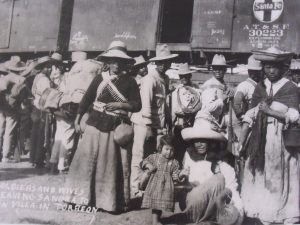
My Journey With BLACK SUN

Readers often ask authors where ideas come from for their novels. It’s a good question and one even I’ve asked of my author friends. For me, BLACK SUN was born from old stories about bandits, revolutionaries, and Indian war parties my maternal grandfather used to tell me; curiosity about his life while growing up in the violent devastation and corruption of old Mexico, and last, my interest in history.
Every novel I write begins as an entertaining story for readers, then at some point, I find myself delving deeper into the research because the book has taken life and I’m compelled to learn more. Such was the case with my novel Amazon Moon in which the maltreatment of the indigenous tribes in the Amazon jungle became one of the prime focuses within the book when initially it was to be the setting.
BLACK SUN truly took years to write. I’ve heard other authors say the same of their works and now I understand how that can be. Normally, a year and a half is my standard length of time to write a novel: a half year to kick it around in my head and do research, and a year to pound the keyboard into the wee hours of the night. Yes, there are those wizards of the written word that say they turn out a book in three months, and I’m happy for them if they can—but I’m not one.
So, armed with a few of my grandfather’s old stories swirling in my head, I began to ask my family questions about him. Little was known. He rarely spoke of his early years and everyone accepted his silence. He may have grown angry when no one believed him, or whatever may be the case, but he said almost nothing about his youth and parents. My other problem was that the related people who had tidbits of information were dead, dying, or didn’t want to reveal much. When you dig around in family histories you are treading on fragile ground. Hidden scars might be revealed or old wounds reopened.
I had come to believe that it was almost too late in life to gather anything credible then a saving grace arose when one of my aunts spoke of her genealogical work on the family tree. From her research I was able to glean trivia, birthdays, baptismal dates, birthplaces, residential locations, and official data from government records. Overlaying all of the family information on a historical timeline of Mexico, I matched family

news.berkeley.edu
dates and history. My thousand-piece puzzle was gradually coming together. From there I dug into the individual history of small towns, people, battles, government officials, etc., and unfolded more tragedy than I wished to know. Then the story I needed to write revealed itself to me.
Every story has to have a variety of characters, one aspect of writing that can drive an author to the brink of insanity to create. I had no such problems. Research on the key players of the Mexican Revolution of 1910 soon reached a point where I wondered if anyone would find them believable. Take Pancho Villa for example. While some called him a hero, others claimed he was nothing more than a thief and murderer. A crack shot, one moment he might draw his pistol and without remorse, shoot a man. The next, Villa might be emotionally moved and openly weep. A renown womanizer, he cared little for money and never held a desire to be the President of Mexico, always informing others that such a position required an educated man which he was not. The stories, whether true or fabricated, go on and on and are the foundation of many debates over Pancho Villa.
Francisco Madero, who called for the revolution against President Diaz, was a short, frail man with a bird-like voice that grew squeaky and high-pitched when he was angered, and irritating to everyone’s ears. He talked to ‘spirits’ who counseled him on actions to take, and in the end, violently died as almost every major player in the revolution did.

University of Chicago
Most people believe the Mexican Revolution was nothing more than Pancho Villa fighting against President Diaz yet there is far more to the story than that. I also found a number of contradictions in the lives of the people which made it difficult to write a true portrayal of the times. The Spanish were hated for their brutal conquest and control of the country, yet after they were run out of the country, the rich, fair-skinned Mexican upper-class treated their own poor countrymen equally bad, looking down on them because of their darker skin. No education was provided and working in the fields was all a peasant was believed capable of. Native Indians were considered the lowest of creatures, expendable slave labor only. At one time a bounty was paid for Indian ears. That was eventually stopped when too many dark ears of peasants were brought in and declared to come from Indians.
Unemployment, government corruption, distrust of government officials, racism, alcoholism, drug addiction, and other social problems were as problematic in old Mexico as currently exist today in America. Chinese immigrants came by the thousands to Mexico and the citizens of Mexico complained they were taking away their jobs, creating a high rate of unemployment. Government corruption was the norm and no one trusted government officials to protect anyone except themselves. The fair-skinned Mexicans looked down upon the darker skinned peasants without true reason. Pulque, a cheap drink, and peyote and marijuana, prevalent hallucinatory plants, gave rise  to alcoholism and drug addiction. With no jobs, the only thing left to do was get high or get drunk. Murder, rape and torture were commonplace. Roving bands of bandits were accepted as either thieves or protectors against the government soldiers. Few, if any of the people, were left untouched by the events leading up to the revolution yet the poor kept love alive in their families and persevered in life, holding on to what little happiness they could find.
to alcoholism and drug addiction. With no jobs, the only thing left to do was get high or get drunk. Murder, rape and torture were commonplace. Roving bands of bandits were accepted as either thieves or protectors against the government soldiers. Few, if any of the people, were left untouched by the events leading up to the revolution yet the poor kept love alive in their families and persevered in life, holding on to what little happiness they could find.

Huracheblog
BLACK SUN is a fictional account of my grandfather in his youth, but the everyday life of the people and the historical events, bandits, politicians, and birth of the revolution are all taken from interviews and countless research papers, diaries, personal journals, and books as I could find. Almost every character was researched so I could have authenticity about their actions, mannerisms, and demise in life.
Of course there will be debates from readers about who was truly good or bad in real life, but such discussions will always exist. At least I know that after reading BLACK SUN, people will have a realistic understanding of the Mexican Revolution of 1910, how it came about, and who were the participants in the civil war.
It’s a shame such a beautiful country as Mexico, rich in resources, culture, and great people, has had such a tragic history up to this very day. Until the government corruption, drug cartels, and high crime rate are brought under control, Mexico will always remain on the verge of another civil war.
I hope you will enjoy BLACK SUN. I look forward to your comments and thoughts on the book.
Glenn
BLACK SUN book cover design by Battle Cry Revival

